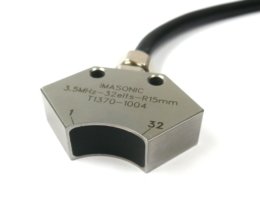
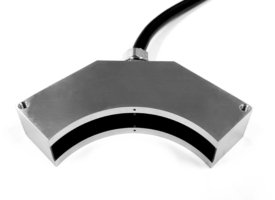
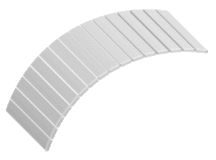



These transducers are an adaptation of flat linear arrays for the inspection of parts with circular symmetry. The linear scanning becomes circular to adapt to inspection of tubes, bars or sections.
360° or sector electronic beam scanning is combined with electronic focusing and beam steering.
Actually there is no standard configuration!
The frequency, the number of elements, the spacing and the radius of curvature are defined according to the tubes, bars or sections to be inspected, the defects to be detected and the desired inspection speed in particular.
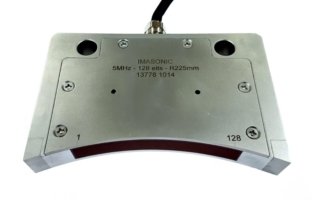
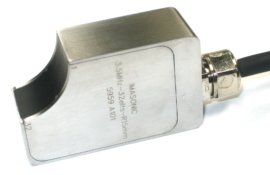
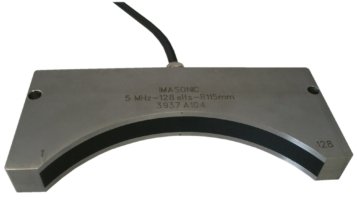
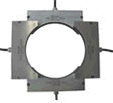


For 360° inspection of tubes or bars, either a single encircling probe or an arrangement of several probes each covering a sector, typically 45° to 90°, can be considered.
Both possibilities offer various advantages and disadvantages.
The sectorial probes require a certain overlap for a homogeneous inspection of the whole circumference. They must therefore be placed in at least two rows, which requires greater axial space. Because of the necessary overlap, a greater total number of electronic channels are also required.
A single probe has the advantage of needing less space, and of optimizing the number of useful channels since no overlap is needed.
The inspection of bars or tubes often requires the use of several simultaneous beams on the same circumference. In the case of a single probe, the reflexions of a beam may cause interference to the inspection with other beams. Arranging the probes over several rows enables this effect to be limited where necessary.
Finally, while the purchase price of each option is not very different, the maintenance cost of the sectional curved probes is markedly lower, as only part of the circumference can be replaced.